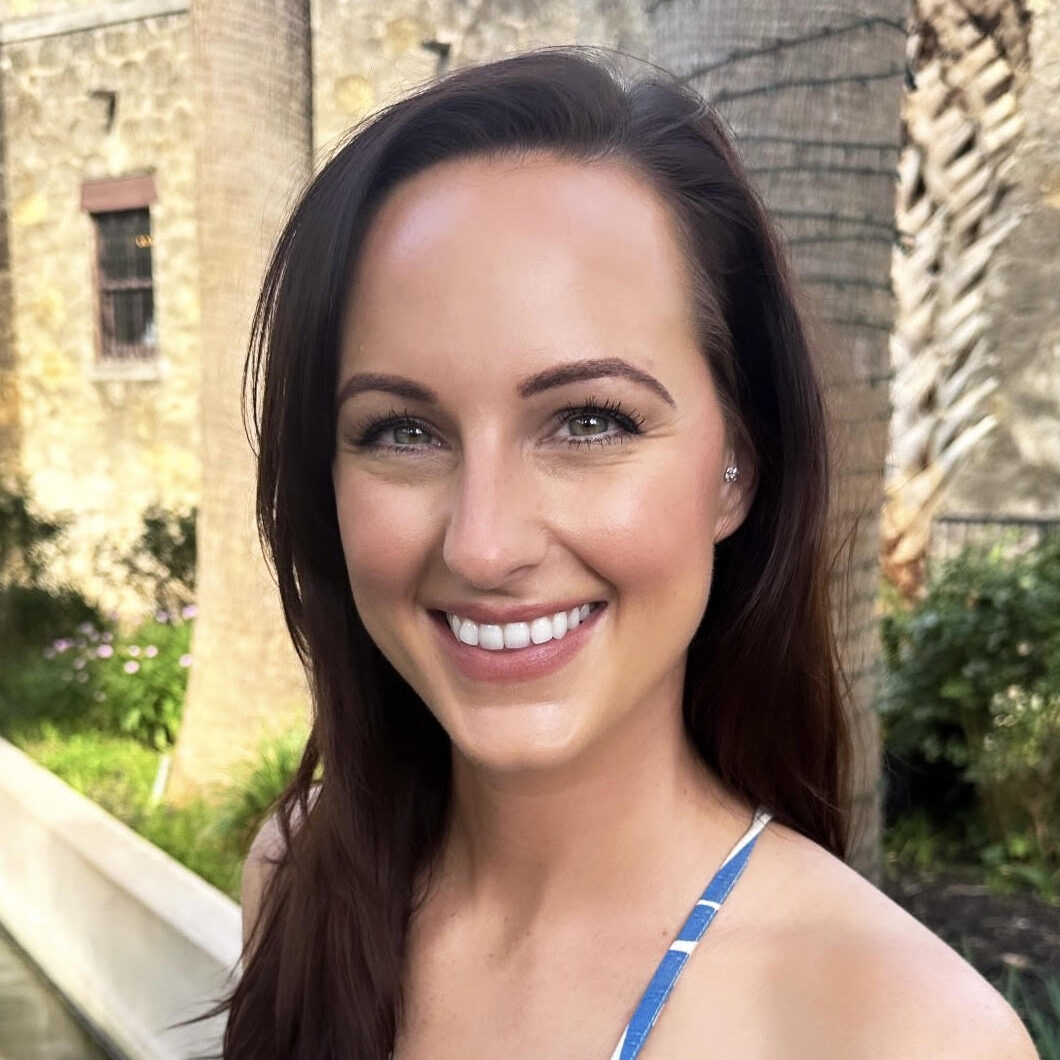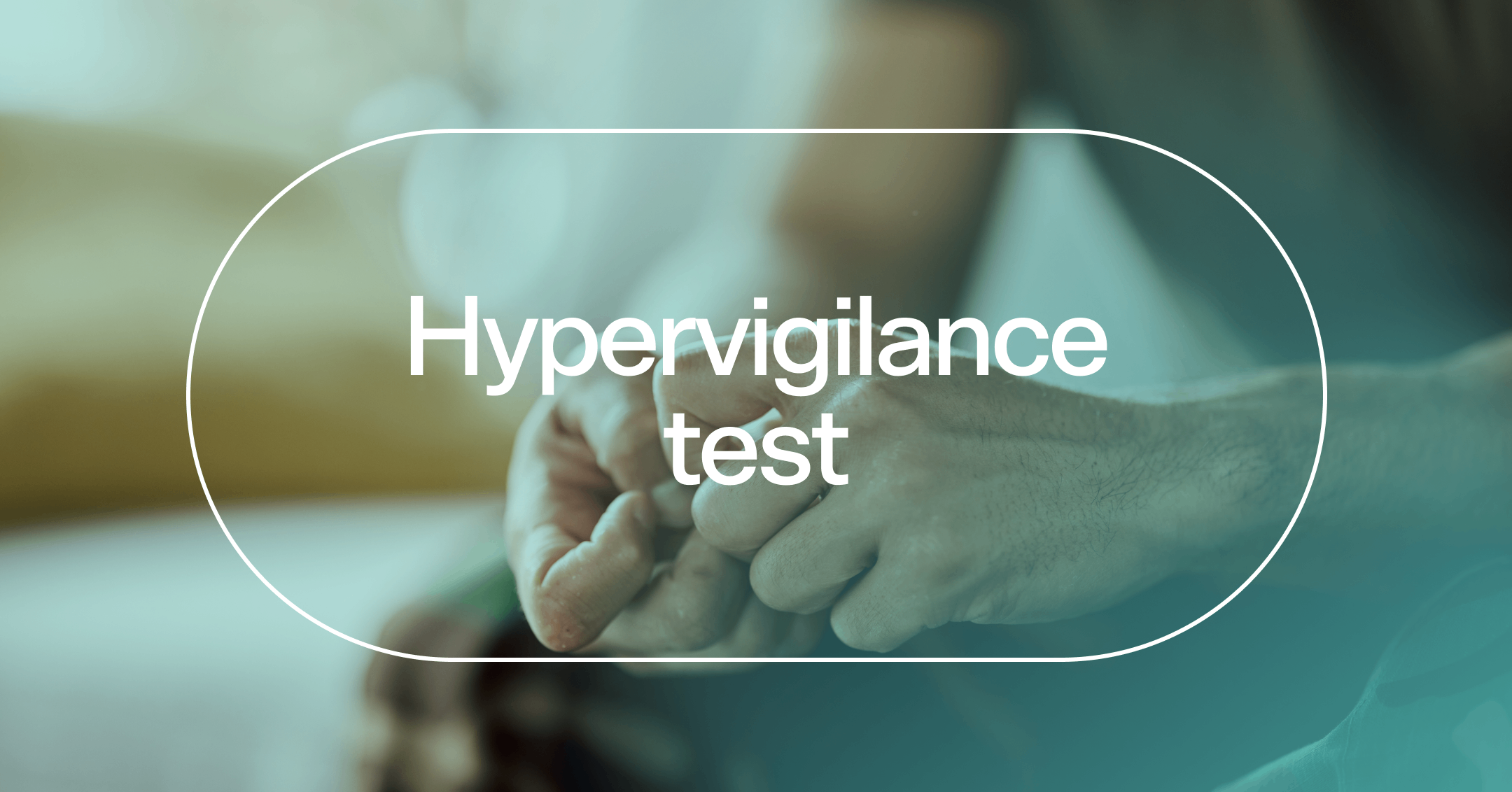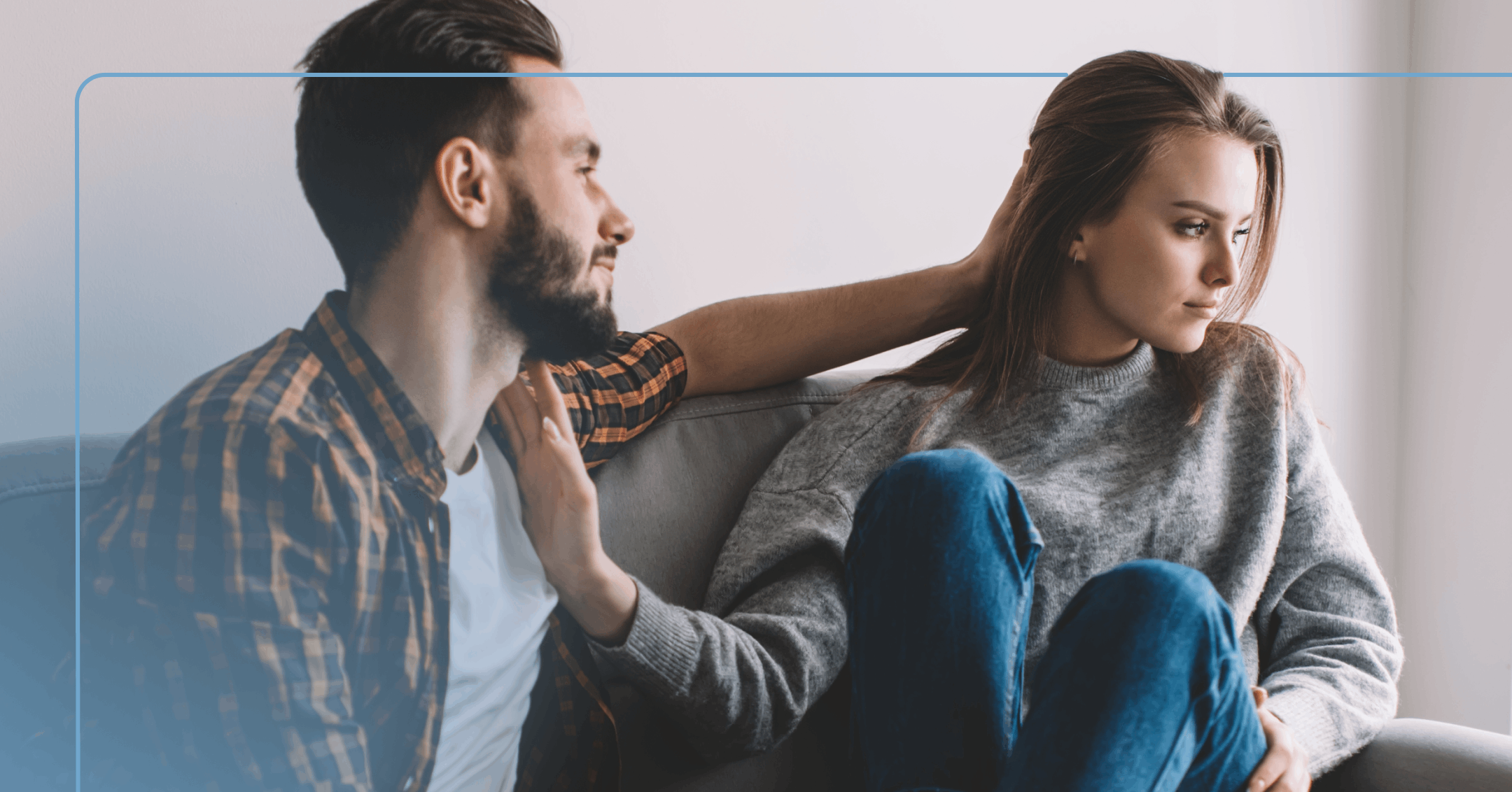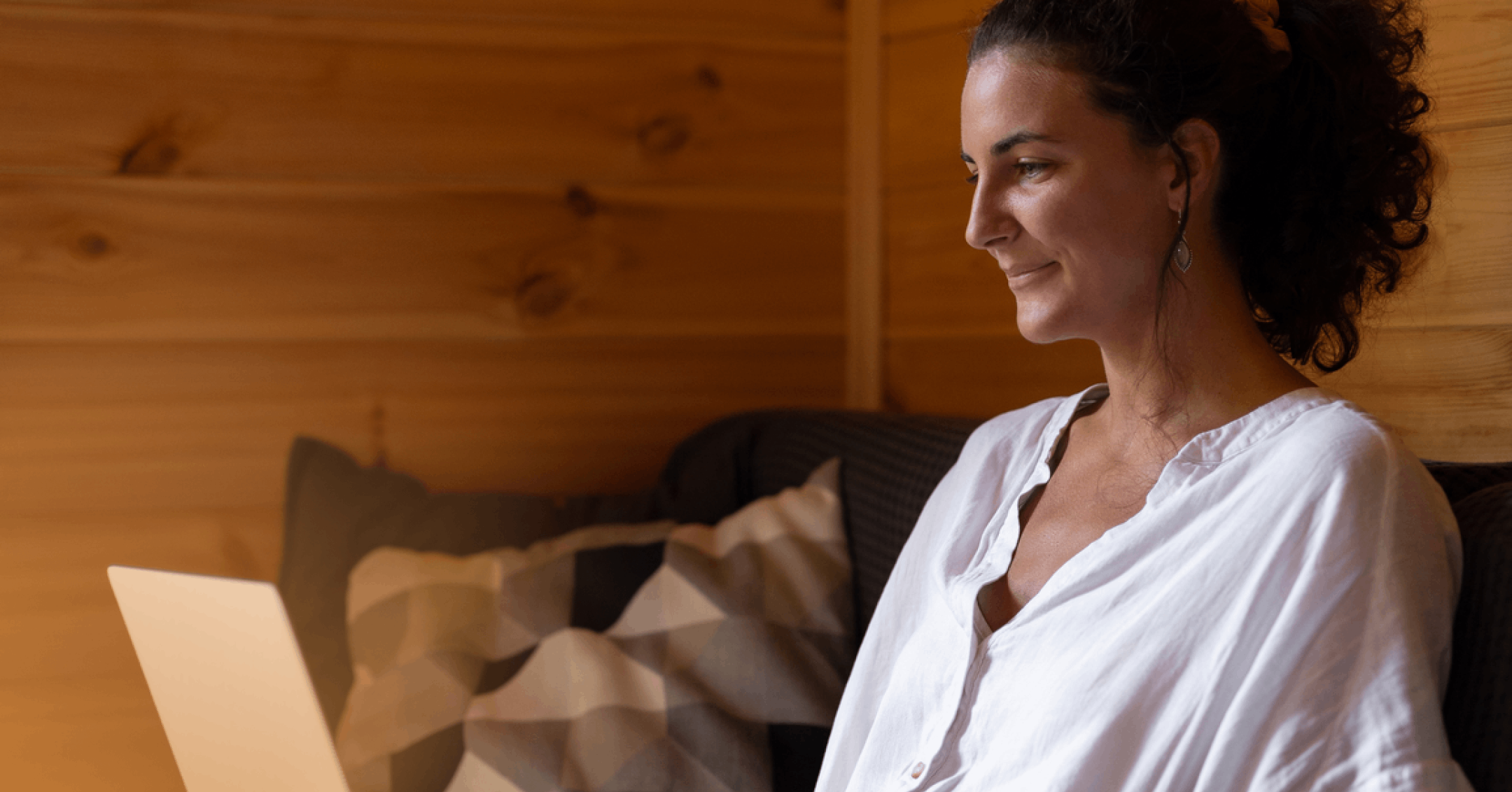Hypervigilance is a state of fear and worry that can negatively impact your well-being. It can cause a person to scan their environment for danger, even when they're safe.
Occasional hypervigilance isn’t necessarily cause for concern. But when it’s chronic and severe, it could be a sign of an underlying mental health concern.
Taking a hypervigilance quiz can help you understand how your worries affect your life. While not a replacement for a professional assessment, it can signal when it might be time to reach out for help.
As humans, we evolved to be highly attuned to potential threats. This sort of vigilance is a stress response and a survival mechanism that helps keep us safe. For example, imagine walking alone through a dark parking garage and hearing someone’s footsteps behind you. In that moment, a bit of extra (or “hyper”) vigilance might prompt you to pick up the pace and get your keys out of your pocket.
However, too much vigilance can create challenges sometimes. This is referred to as hypervigilance, or being constantly on the lookout for threats even when there’s no real danger. Hypervigilance can cause you to feel stuck in a state of fear or worry, even when you’re safe.
Occasional hypervigilance isn’t necessarily a problem. In fact, it’s there to protect us. But if it happens all the time, it could be a sign of an underlying mental health concern like an anxiety disorder or post-traumatic stress disorder (PTSD). If you think you might be struggling with hypervigilance, taking the following quiz can help you better understand yourself. While not a replacement for a professional evaluation, a hypervigilance quiz can help you know when to ask for help.
Take the hypervigilance self-assessment
Before taking the quiz, find some quiet, private space where you won’t be interrupted. Take your time, and feel free to take a break if you need to. You can always come back to the questions later. Remember, there are no right or wrong answers, and this quiz cannot diagnose you with a mental health concern (only a mental health professional can do that). Just answer each question to the best of your ability and choose responses that reflect your experience most of the time.
Do you find it hard to relax, even when there’s nothing stressful going on around you?
Yes
No
Do you feel on edge most of the time?
Yes
No
Do you think about worst-case scenarios often?
Yes
No
Have people told you that you’re irritable or quick to get angry?
Yes
No
Do you feel like you have to constantly be on high alert?
Yes
No
Do you often feel like something bad is about to happen, even when things are going well?
Yes
No
Do you frequently replay past events in your mind?
Yes
No
Is it particularly difficult for you when something doesn’t go according to plan?
Yes
No
Do you get startled easily?
Yes
No
Do you have a hard time trusting your surroundings and the people around you?
Yes
No
Quiz content written by Lolly Coleman, MS, LMFT.
The care you need, when you need it
Learn how Rula can support your mental health journey
How does this hypervigilance test work?
This test was created by therapists with experience treating people with hypervigilance. The questions are based on formal hypervigilance assessments but modified to make them more accessible.
The test is designed to uncover possible clinically significant hypervigilance. But as a self-assessment, it can’t determine whether or not you have a mental health condition, like anxiety.
Here’s how to interpret your results:
If you scored “mostly yes,” you may be experiencing feelings of hypervigilance. If constant fears and worries are impacting your daily life, it might be time to ask for help.
If you scored “mostly no,” you might be experiencing occasional worry or hypervigilance. But it’s not necessarily cause for concern.
What you can do after taking the quiz
If hypervigilance is taking a toll on your mental health and daily life, don’t hesitate to ask for help. A therapist or psychiatrist can provide an assessment and determine if your hypervigilance is due to an underlying mental health concern. Then, they can help ensure you get the right treatment for your needs. Depending on your diagnosis, this could include therapy, medication, or a combination of supports.
In addition to seeking professional help, you can take steps to manage your hypervigilance. For example, if you know your triggers, it’s much easier to control your reactions to them. Let’s say you know that you struggle in noisy public spaces. If you know you have to navigate a crowded area, you can pack some noise-cancelling headphones or other items to make you more comfortable.
Challenging unhelpful thoughts is another thing you can do to manage hypervigilance. Often, hypervigilance is tied to “worst-case scenario” or catastrophic thinking. For example, let’s say you have a deep-seated fear of making a mistake at work because you think your coworkers will mock you. When those worries arise, ask yourself whether you have evidence to support them. Interrupting catastrophic thoughts by considering what’s likely versus what’s possible can help stop the cycle of hypervigilance.
One sign of hypervigilance that can look like ‘normal worry’ is the habit of staying on alert even in safe, everyday situations. You might be double-checking locks, feeling tense in a store, or imagining worst-case scenarios. While it may seem like being extra careful, what’s really happening is that the body and mind aren’t getting a chance to fully relax.

Ashley Ayala, LMFT
Clinical reviewer
Find care with Rula
There’s nothing wrong with wanting to feel safe and secure in your surroundings. However, if constant fears and worries are leaving you feeling on edge all the time, it could be a sign of hypervigilance. If you’re always on high alert, and it’s taking a toll on your life, consider taking a hypervigilance quiz. While not a replacement for a professional assessment, your results can help you increase your self-awareness and know when it might be time to connect with a therapist or psychiatrist for help.
At Rula, we’re committed to delivering a comprehensive behavioral health experience that helps people feel seen and understood so they can get back to feeling their best.
Rula makes it easier to find a licensed therapist or psychiatric provider who accepts your insurance so you don’t have to choose between affordable care and excellent care. With a diverse network of more than 15,000 providers, 24/7 crisis support, and appointments available as soon as tomorrow, we're here to help you make progress — wherever you are on your mental health journey.
Rula's editorial process
Rula's editorial team is on a mission to make science-backed mental health insights accessible and practical for every person seeking to better understand or improve mental wellness.
Members of Rula’s clinical leadership team and other expert providers contribute to all published content, offering guidance on themes and insights based on their firsthand experience in the field. Every piece of content is thoroughly reviewed by a clinician before publishing.




